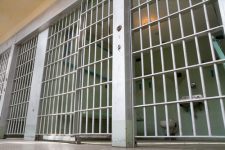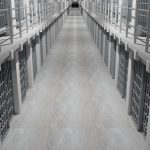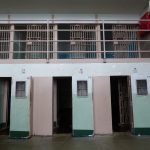The Australian Prison Boom: Taking Care of Big Business

The number of people being detained in Australian correctional facilities is at an all-time high. As of March this year, there were 40,577 full-time adult inmates in this country, according to Australian Bureau of Statistics figures released this month.
The Australian prisoner population has been steadily increasing since the 1970s. Since March last year, the number of people in full-time custody has increased by 7 percent. And over the last five years, the figure has increased by a staggering 38 percent, or 11,274 inmates.
NSW remans the greatest incarcerator of all Australian states and territories. The state accounted for 32 percent of the nation’s inmates in March, or 13,055 adult prisoners.
The number of people behind bars in this country is ever-increasing, despite the fact that most major categories of crime have either fallen or remained stable since 2001.
Indeed, a recently released Australian Institute of Criminology report revealed that the nation’s homicide rate is at an all-time low. The national rate was down to 1 victim per 100,000 people in 2013-14, which is the lowest rate since the national homicide monitoring program started in 1989.
In NSW, overall crime rates are at their lowest in forty years. In the 24 months to March this year, four of the seventeen major categories of crime have fallen, while the remaining thirteen have remained stable, NSW Bureau of Crime Statistics and Research (BOCSAR) figures released this month outlined.
A spike in the unsentenced
Thirty three percent of the nation’s inmates in March were on remand – those who were refused bail and awaiting the finalisation of their cases. This represents an increase of 14 percent on the year prior, and an alarming rise of 87 percent over the last five years.
As Justice Action coordinator Brett Collins told Sydney Criminal Lawyers® in March, there are several reasons for this steep increase in remandees. One reason is the wait time for cases to proceed through the nation’s overworked and understaffed court system.
Then there’s the tightening of bail laws. Under the Bail Amendment Act 2014, people now have to “show cause” as to why their detention is not justified if they are charged with any one of more than 900 discrete offences.
These show cause offences include those punishable by life imprisonment, as well as indictable offences such committing an act of grievous bodily harm, offences which involve a prohibited firearm in a public place – the list goes on and on.
And the last major contributing factor that Mr Collins pointed to was police cracking down on people breaching their bail conditions.
Remand opens the gates
The remand figure for March accounted for 13,182 inmates, many of whom will ultimately have their cases dropped or thrown out of court. Recidivism rates in this country are nearing 50 percent, meaning almost half of the people released from prison with return within two years.
Remand inmates that ultimately have their charges withdrawn or dismissed will have had their lives turned upside down during the lengthy prosecution process. And if recidivism rates are taken into consideration, this means the Australian prison system is potentially producing its very own revolving door prisoners.
Female incarceration is ever-increasing
The recent figures also suggest a continuation in the upsurge of female prisoners. Since March 2016, the number of women in prison has increased by 13 percent, more than double in male incarceration of 6 percent.
Female inmates make up a small proportion of the overall Australian prisoner population. In March, there were 3,352 women being detained in Australian correctional facilities, compared with 37,225 male prisoners.
However, there’s been a 400 percent increase in the imprisonment rate of women over the last 35 years. In 1982, the female incarceration rate was 7 inmates per 100,000 women, whereas in March this year the rate was up to 35 per 100,000.
BOCSAR director Dr Don Weatherburn has put this rise down to intensified policing and the increasing toughness of the court system. Most of the increase in the female imprisonment rate since 2005 is due to non-violent crimes, BOCSAR figures show.
Indigenous incarceration rates
Aboriginal and Torres Strait Islander people are the most incarcerated people on earth. The Indigenous incarceration rate in this country is currently 2,430 inmates per 100,000 adults.
The state of Western Australia has the highest incarceration rate of our nation’s First Peoples, at 4,011 inmates per 100,000 Indigenous adults.
As of March this year, there were 11,288 Indigenous adults detained in the Australian prison system. Aboriginal and Torres Strait Islander people account for only 2.5 percent of the overall Australian adult population, yet they represent 28 percent of the adult prisoner population.
The proportion of the Australian prison population made up of Indigenous people has doubled from the 14 percent it was at in 1991, which was the same year that the Royal Commission into Aboriginal Deaths in Custody delivered its findings.
The commission made 339 recommendations, most of which have never been implemented.
To many, it’s obvious that colonialism is alive and well in Australia.
Indigenous women are the most heavily represented of all
The largest growth in a particular group of prisoners is Indigenous women. Whilst they account for around 2.5 percent of the overall adult female population in this country, they make up 34 percent of all incarcerated women in Australia. This represents a 250 percent increase since 1991.
Over the decade ending in 2010, the imprisonment rate for Indigenous women rose by 58.6 percent, compared with 35.2 percent for Indigenous men, and 22.4 percent for non-Indigenous women.
Many of these women become stuck in a cycle of going in and out of prison for minor offences. They’re often young, unemployed mothers, who are faced with a lack of support and housing options on release, which are major contributing factors to re-offending.
Skipping down the pathway
Even though crime rates are down, Australian authorities are locking up a greater portion of the population than ever before. And politicians keep enacting tougher laws that sending people away for less serious offences.
Some experts put this down to ministers simply following the will of their constituents who – faced with sensationalist media reporting on a daily basis – believe that crime rates are actually rising.
The fact of the matter is that in Australia, as with other parts of the world, incarceration is a good profit spinner for big business.
The NSW government is investing $3.8 billion to fund an extra 7,000 inmate beds. This is an almost 50 percent increase in the capacity of the state’s correctional facilities.
The jewel in the crown is the Grafton Correctional Facility, which, when built, will be the nation’s largest prison with the capacity to detain 1,700 inmates. It’s being built by consortium Northern Pathways, which comprises of Serco, John Laing, John Holland and Macquarie Capital, who are all set to fatten their pockets by building and managing the facilities.








